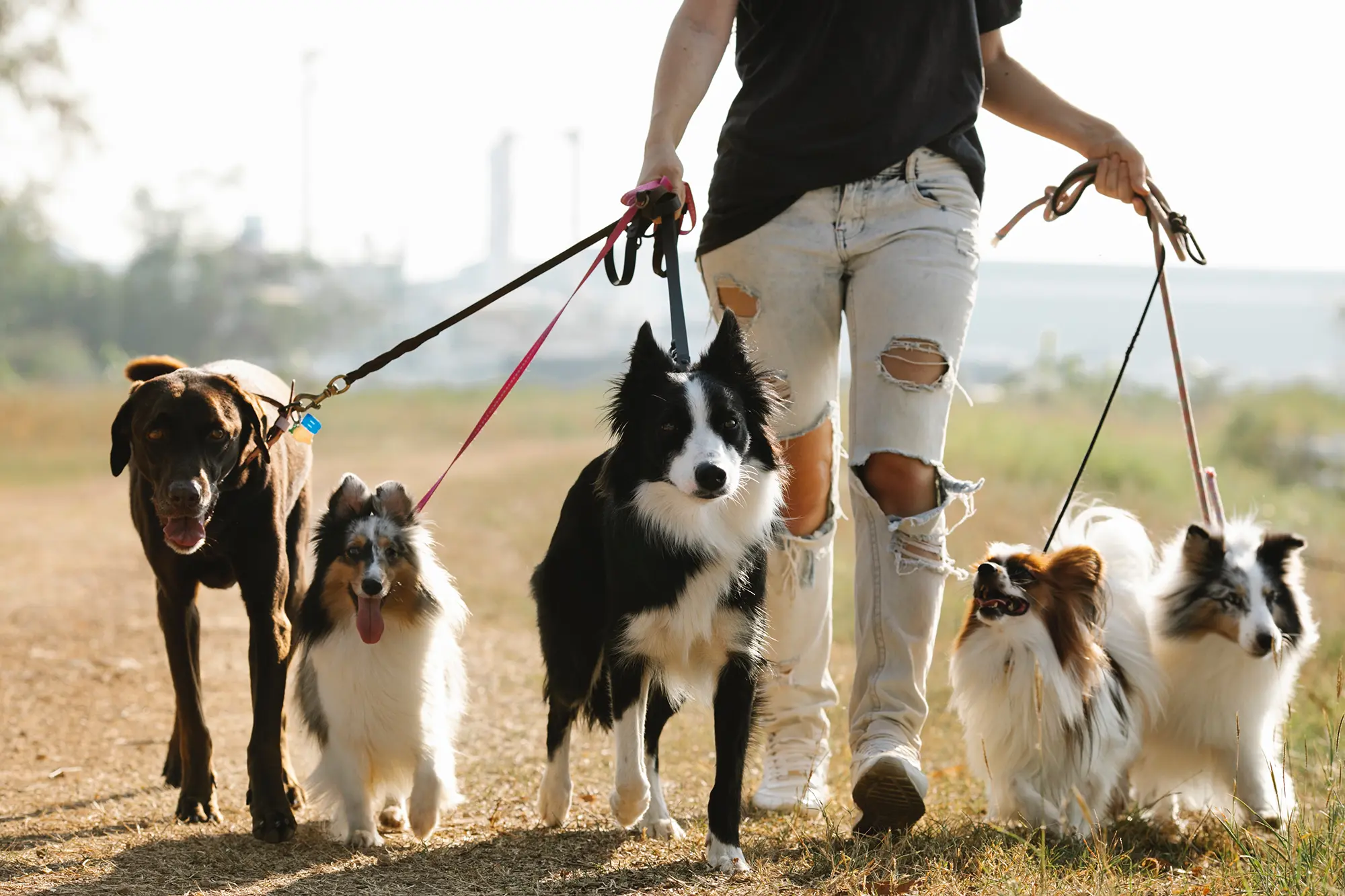is picky eating a sign of a serious issue?
Author: PawPots Team
 27 Feb 2023
27 Feb 2023
 10 min
10 min There is no such thing as an "inherently picky eater." And, before labeling certain pets as picky eaters, it's important to rule out any medical issues first. Let’s break down what could be affecting your pet’s will to eat and what you can do to help them eat again.
What Illnesses Could Potentially Cause Picky Eating?
1. Allergies and sensitivities
Allergies and upset stomachs can cause pets to refuse food, as they can cause discomfort for hours after eating and may lead to hesitant eating or digestive problems, such as gas, vomiting, or diarrhea. Most commercial pet foods, such as kibble or canned foods, aren’t transparent when it comes to their ingredients, so opt for fresh, human-grade food; it’s healthier, tastier, and has no artificial ingredients or preservatives.
2. Body/Oral Injury or Disease
Another reason your pet may be displaying signs of picky eating is the presence of an injury or disease. When feeling your pet's body, look for any signs of discomfort, and don't forget to check their mouth, as their gums may be swollen or bleeding. If their tongue, teeth, and gums look sensitive, tender, or painful, it could be causing your pet’s lack of enthusiasm for food. Just like humans, animals will not feel hungry when they are physically uncomfortable.
It is also highly important to look out for dogs' and cats' dental hygiene. Poor dental hygiene over time or playing with something like a stick or a toy with sharp edges can often be the culprit. Other times, the problem stems from periodontal disease, the most common dental condition in dogs and cats. The most effective way to treat any dental problem in pets is to visit the veterinarian.
3. Stress and Anxiety
Much like in humans, anxiety can cause animals to have upset stomachs, and they may avoid food as a result. Anxiety can be caused by changes in the pet's environment, like someone moving out or someone moving in. Other changes in the environment include bringing in a new pet, changing the routine around the house, or a household member starting work and spending more time away from the pet.
One also ought to keep in mind that pets will pick up on our stress. If you’ve been feeling stressed out, your pet may be feeling more anxious too. Take a moment to assess any recent changes in your pet’s life and see if they line up with a recent change in their eating habits. Try to make them feel less anxious about the change by reducing your own stress, getting them back into a normal routine, exercising them, or spending more quality time with them. They’ll likely return to their normal eating habits once they’re sure everything is okay.
4. Other Medical Conditions
Generally, it’s important to rule out any potential medical conditions that may be causing your pet to be disinterested in their food. If your pet is sick, they may not feel like eating. So, if your pet has recently shown signs of illness, like fatigue, vomiting, or diarrhea, we recommend reaching out to your vet to treat the root problem.
Another culprit could be a recent change in medication. Certain medications and antibiotics can cause nausea or stomach aches. Speak with your vet about any recent changes to your dog’s medical treatment to see if those changes could be affecting their willingness to eat.
Any significant changes in your pet’s weight should also be brought up right away with your vet.
If There Are No Medical Issues
If you clear up all medical issues that could be affecting your pet's eating habits, their picky eating can be related to the food itself or to the feeding schedule.
1. Food-Related Issues
Smell and taste are important factors in both dogs' and cats' enjoyment of their food. Smell is a much bigger factor than taste, as dogs' sense of smell is about 40 times greater than that of humans, and cats' sense of smell is 14 times stronger than that of humans.
At PawPots, we pay attention to flavor and texture, making our meals both appealing and easy on the stomach. Our freshly cooked meals are perfect for pets with sensitive stomachs as well as picky eaters. Many pets dislike dry, hard kibble, which oftentimes lacks moisture, flavor, and nutrition. Many more are easily bored with dry kibble over time.
It is also important to note that cat owners ought to watch out for the food bowls they purchase. Cats are prone to "whisker fatigue," which is essentially a sensory overload on their whiskers. Cats' whiskers are highly sensitive, so if they are constantly in contact with the bowl rims, it can cause discomfort, which in turn prevents cats from eating comfortably and effectively.
2. Schedule & Timing
Take a look at when you feed your pet. Dogs and cats thrive on routines, as having the same routine every day reduces anxiety. On top of that, pets' metabolisms get used to patterns, making it easier to control weight, anxiety around food, and food-related behavioral problems.
Pet owners can consider a consistent routine and try to aim for the same time, place, and setting when feeding their pets. To add to that, dog owners should keep in mind that dogs are highly social pack animals. If their guardians have been away from them all day, they won’t eat; they will when you’re home, as they’re waiting for their "pack" to return. They also tend to wait until they have cooled down from a long walk or hike before their appetite returns. As for cat owners, they can try playing with their feline friends before mealtime to stimulate their appetite. Cats enjoy chasing a toy and pouncing on it, as it mimics what they would do with a would-be meal in the wild.
How to Get a Picky Pet to Eat
1. Controlling their Eating Habits and Routines
As stated above, having a regular and consistent routine greatly improves dogs' and cats' appetites. Once you do feed them, make sure you give your pet up to 30 minutes to eat before removing their food. You want to give your pets enough time to eat in peace, but keep in mind that pets with constant access to their food will tend to be pickier. If they refuse to eat for 24 hours, try switching to fresh food—or switch back to their old food and make sure you re-transition to fresh food properly.
An abrupt switch without time to get used to the new food can make a hungry pet walk away. Some pets don’t like new things or changes in the environment (especially picky kitties!). When you transition to fresh food, start with a small spoonful.
2. Observe their Behavior
Dogs and cats are very smart animals. If they notice that you’ve been feeding them table scraps or topping their kibble with indulgent human foods, they may purposefully hold off on eating to see what you’ll do to encourage them to eat. If this is the case, it’s crucial that you don’t give in! Try giving your pet those 30 minutes to eat, then taking away whatever they don’t eat. According to the American Kennel Club, taking away your dog’s uneaten food is very effective at counteracting fussy eating habits.
Cats, on the other hand, are the pickiest and the most stubborn, especially when it comes to changes in their diet. If you are changing your cat's food, make sure you do so really slowly and be patient. Cats are extra cautious about what they eat.
3. Food Quality
Fresh food is worth the extra work of transition. Not only will it fulfill your pet’s needs, but it’s delicious, and they will gobble it up!
Cats, for example, are obligate carnivores. They need a rich diet that strengthens their bodies. Our PawPots meals are made with real chicken and fish—just what your cat would eat in the wild—with important nutrients and a few healthy veggies! Fresh food has the ideal water content as well, so it’ll support your cat’s digestive system.
Our meals are also great for dogs! Not only do they improve their health in the long run, but it’s great for dogs with sensitive stomachs or food allergies. Most dogs find softer, wetter food more palatable. It’s also a great option for dogs with dental issues, which is why many senior dogs and puppies with soft teeth benefit from PawPots!
4. Overfeeding and Overtreating
Just like humans, our pets can get bored with the same food over time. Try introducing new proteins in the same food format from time to time. It’s also possible that your pet’s favorite food has undergone a formula change recently. PawPots offers a variety of proteins to switch from without negatively impacting your pet’s diet!
It makes sense that if your pet is snacking too much between meals, they’re not going to be as hungry at mealtime. But you may also be overfeeding your pet! Cats, for example, need small, frequent, portion-controlled meals each day, and they need to interact with their "prey." A diet of whole foods with no added sugars can help you achieve a healthy weight.
5. Warm Food and New Locations
Warming your pet’s food can entice them to eat. This can also soften the food, making it easier to eat. Changing where you feed your pet also plays an important role.
Feed your cat separately from other cats or dogs. Because eating is a vulnerable time for cats, you may unintentionally be depriving them of their true selves and their sense of security. Keep in mind that cats are solitary hunters and predators, not pack members like dogs. They want to hunt and eat alone.
In Conclusion…
Once you’ve eliminated health-related issues, it’s more than worth it to get your pet excited about food. If your pet’s still not satisfied, you can always try switching to a fresher, more nutrient-dense meal that they will definitely enjoy.
Even the pickiest of pets enjoy the benefits of fresh diets. At PawPots, our meals provide the proper nutrient balance. You might be amazed at how introducing fresh ingredients can change the picky-eating game!
References
1. Cat Senses | PAWS Chicago. (n.d.). Cat Senses | PAWS Chicago.
2. Chappell, M. (2017, September 5). DOGS AND ROUTINE - VetIQ UK. VetIQ UK.
3. How do I persuade my cat to eat their new food? - Mayne Vets. (2018, January 31). Mayne Vets.
4. How Powerful Is a Dog’s Nose? (2020, July 23). How Powerful Is a Dog’s Nose? Phoenix Veterinary Center - Veterinarian in Phoenix, AZ US.
5. How to Help Calm Down an Anxious Dog | PetMD. (n.d.). How to Help Calm Down an Anxious Dog | PetMD
6. Is Your Dog Being Fussy With His Food? - AKC Canine Retreat. (2018, June 13). AKC Canine Retreat.
7. Pet dental care. (n.d.). American Veterinary Medical Association.
8. Whisker Fatigue in Cats: What it is and How to Help | PetMD. (n.d.). Whisker Fatigue in Cats: What It Is and How to Help | PetMD.

Give Back The Love
Show your love to your pets with our high-quality, delicious and healthy meals! Show your love to your pets with our high-
quality, delicious and
healthy meals!






